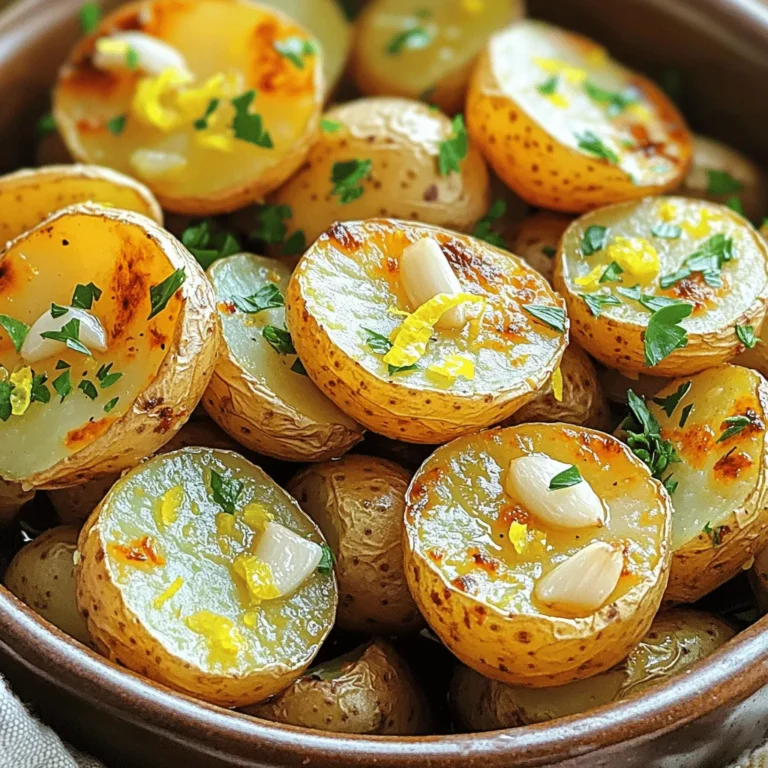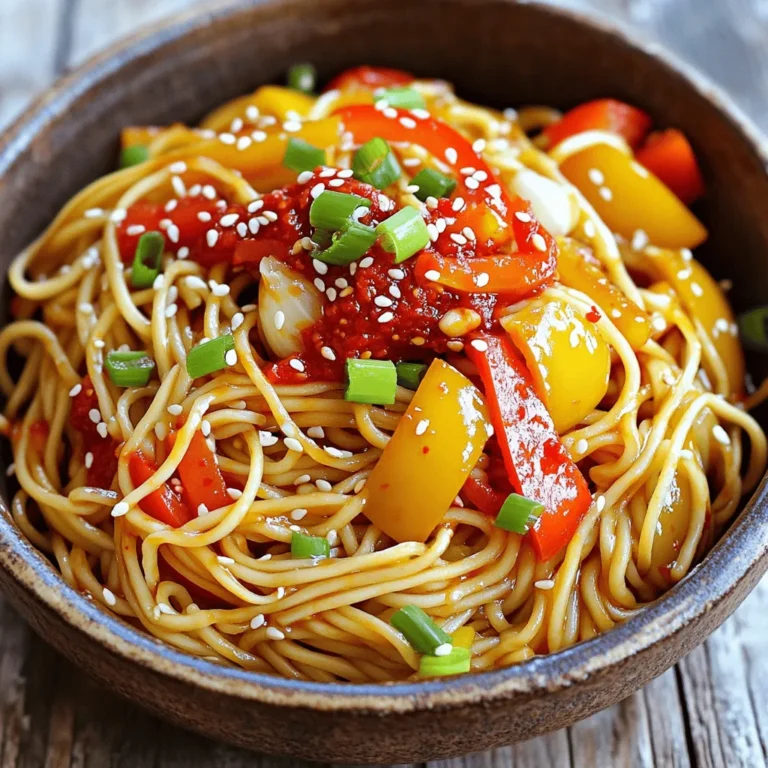Classic Margherita Pizza Delightful Homemade Recipe

Do you love pizza? If so, you must try making Classic Margherita Pizza at home! With simple ingredients like fresh mozzarella and San Marzano tomatoes, this delightful recipe captures the essence of Italian cuisine. I’ll show you step-by-step how to create the perfect crust, assemble the toppings, and bake a masterpiece. Get ready to impress your friends and family with your newfound pizza-making skills! Let’s dive into this fresh, delicious adventure!
Ingredients
Essential Ingredients for Classic Margherita Pizza
– All-purpose flour: This is the backbone of our pizza dough. It gives the dough its structure and texture. The gluten in the flour helps the dough rise and become chewy.
– Active dry yeast: This ingredient makes the dough rise. It feeds on sugar and creates gas bubbles. Those bubbles make the dough fluffy and light.
– Fresh mozzarella: This cheese is key to Margherita pizza. It melts beautifully and has a mild flavor. Other cheeses can be used, but they won’t give the same taste and texture.
Fresh Produce and Seasonings
– San Marzano tomatoes: These tomatoes are sweeter and less acidic than regular ones. They create a rich, flavorful sauce that complements the cheese. Using good quality tomatoes makes a big difference.
– Fresh basil: Fresh basil adds a fragrant aroma and bright flavor. It’s best to use fresh leaves instead of dried ones. Fresh basil really brings the pizza to life.
– Olive oil: Extra virgin olive oil is the best choice. It adds a fruity, rich flavor. Drizzling it on the pizza before and after baking enhances the taste. Different oils can change the flavor, so choose wisely.
For the complete recipe, check out the Full Recipe above.
Step-by-Step Instructions
Preparing the Dough
To make the dough, start by mixing yeast, sugar, and warm water. Use about ¾ cup of water at 110°F. Stir gently and let it sit for 5-10 minutes. You will see bubbles; this means the yeast is alive.
In a big bowl, combine 2 cups of all-purpose flour and 1 teaspoon of sea salt. Make a well in the center of the flour. Pour in the yeast mixture and 1 tablespoon of olive oil. Mix it all together with your hands or a spoon. Keep mixing until you have a shaggy dough.
Next, transfer the dough to a floured surface. Knead it for about 5-7 minutes. Use your palms to push the dough away and fold it back. You want the dough to feel smooth and elastic. This step is key for a good pizza base.
Rising and Shaping the Dough
After kneading, shape the dough into a ball. Place it in a lightly oiled bowl. Turn it to coat the surface. Cover the bowl with a damp cloth. Let it rise in a warm spot for about 1 hour. The dough should double in size.
Once risen, gently punch down the dough to release air. Turn it onto a floured surface. Roll it out into a 12-inch round shape. If you prefer, shape it by hand using your fingertips. This helps keep some air in the dough.
Carefully transfer the dough to a baking sheet or a preheated pizza stone. If using a stone, make sure it is hot for a crispier crust.
Assembling and Baking the Pizza
Now it’s time to assemble your pizza! Spoon 1 cup of crushed San Marzano tomatoes over the base. Spread it out evenly. Add a sprinkle of salt and fresh pepper for flavor.
Next, evenly arrange slices of fresh mozzarella on top. This cheese melts beautifully and adds creaminess.
Preheat your oven to 475°F (245°C). Bake the pizza for 10-12 minutes. Keep an eye on it. The crust should turn golden brown, and the cheese should be bubbly.
Once out of the oven, scatter fresh basil leaves on top. Drizzle with extra virgin olive oil. This adds a burst of flavor. Let it cool for about one minute before slicing. Enjoy your homemade Margherita pizza! For a more detailed guide, check out the Full Recipe.
Tips & Tricks
Achieving the Perfect Crust
To get a crispy crust, use less water in the dough. If you want a chewier texture, add a bit more water. A pizza stone helps achieve that perfect crispiness. Preheat it in your oven at 475°F (245°C) for at least 30 minutes.
Managing oven temperature is key. Always check your oven’s heat with an oven thermometer. Heat spots can make your pizza cook unevenly. If your oven runs cool, it may need more time to bake the pizza.
Flavor Enhancements
Season your tomato sauce with a pinch of salt and a dash of olive oil. This adds depth to the flavor. You can also use dried oregano or garlic powder for a little extra taste.
A touch of sugar can balance the acidity of the tomatoes. Just a teaspoon can make a big difference. It helps round out the flavors and make the sauce taste richer.
When it comes to fresh basil, I prefer to add it after baking. This keeps the flavor bright and fresh. If you want a more intense flavor, add some before baking for a deeper taste.

Variations
Gluten-Free Margherita Pizza
For a tasty gluten-free Margherita pizza, you can use specific flour blends. Look for blends that combine rice flour, tapioca starch, and potato starch. These mixes mimic the texture of regular flour well. You should also adjust the dough’s hydration. Gluten-free dough often needs more water to help it rise and bind.
Vegan Margherita Pizza
If you want a vegan option, substitute fresh mozzarella with plant-based cheese. Many brands now offer nice alternatives that melt well. You can also enhance the flavor with nutritional yeast. This ingredient adds a cheesy, nutty taste that pairs well with tomatoes and basil.
Additional Toppings and Combinations
To make your Margherita pizza even better, consider adding popular toppings. Slices of fresh tomatoes or artichokes can add depth. You can also try olives or prosciutto for a salty kick. In different regions, variations exist. For example, in Naples, people might add a drizzle of balsamic glaze. In other areas, spicy peppers or arugula can top the pizza for extra flavor.
Storage Info
Leftover Storage Tips
To store uneaten pizza properly, place it in an airtight container. You can also wrap it tightly in plastic wrap. This keeps the pizza from drying out in the fridge. For best taste, eat the leftover pizza within three days.
To reheat pizza without losing quality, use your oven. Preheat it to 375°F (190°C). Place the pizza on a baking sheet and heat for about 10 minutes. This helps keep the crust crispy and the cheese melty. You can also use a skillet. Heat it over low heat for about 5-7 minutes, covering it with a lid. This method warms the pizza evenly.
Dough Storage
If you have raw pizza dough left, you can freeze it. Lightly coat it with olive oil and wrap it in plastic wrap. Place it in an airtight bag or container. Frozen dough can last for up to three months. When ready to use, thaw it in the fridge overnight.
To prolong the shelf life of prepared dough, store it in the fridge. Place it in a bowl and cover it with plastic wrap. It can last for about 3 days in the fridge. Before using it, let it come to room temperature for easier shaping.
FAQs
What is the origin of Classic Margherita Pizza?
Classic Margherita pizza comes from Naples, Italy. It has deep roots in Italian culture. This pizza is named after Queen Margherita of Savoy. In 1889, the queen visited Naples. A chef made a pizza in her honor. He used colors from the Italian flag: red, white, and green. Red tomatoes, white mozzarella, and green basil represent Italy. This pizza became a symbol of Italy’s culinary pride.
Can I make Margherita pizza ahead of time?
Yes, you can make parts of the pizza ahead. Prepare the dough and let it rise. You can also make the sauce in advance. Store the sauce in the fridge for up to three days. For the best taste, try to bake the pizza fresh. Assemble it just before baking. This keeps the crust crispy and the cheese melty.
What are the best side dishes to serve with Margherita pizza?
Pair your Margherita pizza with simple salads. A fresh arugula salad works well. You can add lemon juice and olive oil for flavor. For appetizers, try bruschetta or caprese skewers. They complement the pizza’s flavors. As for drinks, a light white wine or sparkling water is great. Both refresh your palate and enhance the meal.
In this post, I covered how to make Classic Margherita Pizza from scratch. We explored essential ingredients like fresh tomatoes, mozzarella, and basil. I provided step-by-step guidance on dough preparation, rising, and baking. I shared tips for achieving the perfect crust and offered variations for gluten-free and vegan options. Remember, quality ingredients make a big difference. With practice, you can create delicious pizzas at home. Enjoy the process and the tasty results that follow!




![To make a tasty Caprese pasta salad, you need these key ingredients: - 8 oz pasta (fusilli or penne) - 1 cup cherry tomatoes, halved - 1 cup fresh mozzarella balls, halved - 1 cup fresh basil leaves, chopped - 1/2 cup sun-dried tomatoes, finely chopped - 1/4 cup balsamic glaze - 1/4 cup extra virgin olive oil - 1 teaspoon garlic powder - Salt and black pepper to taste - 1/4 cup pine nuts, toasted These ingredients bring together fresh flavors and textures. The pasta serves as a sturdy base, while the tomatoes and mozzarella add creaminess and sweetness. Fresh basil gives a lovely aroma and taste. Sun-dried tomatoes add depth, and the balsamic glaze offers a tangy finish. You can make this dish more exciting by adding a few optional ingredients: - Grilled chicken for protein - Arugula for a peppery bite - Spinach for extra greens - Olives for a briny flavor Feel free to mix and match these additions. They can help customize the salad to your liking. If you have dietary needs, here are some easy swaps: - Use gluten-free pasta for a gluten-free option. - Swap mozzarella with vegan cheese for a dairy-free version. - Replace balsamic glaze with lemon juice for a lighter dressing. These substitutions keep the dish tasty while meeting your dietary needs. Enjoy the fresh and flavorful delight of Caprese pasta salad! For the full recipe, check out the detailed instructions. First, boil a large pot of salted water. Add 8 oz of pasta, either fusilli or penne. Cook it for 8 to 10 minutes until it is al dente. Drain the pasta and rinse it under cold water. This stops the cooking and cools it down. In a big mixing bowl, add the cooled pasta. Now, toss in 1 cup of halved cherry tomatoes, 1 cup of halved fresh mozzarella balls, and 1 cup of chopped basil leaves. Don't forget 1/2 cup of finely chopped sun-dried tomatoes. Mix them well so everything is evenly spread. Grab a small bowl and whisk together 1/4 cup of balsamic glaze and 1/4 cup of extra virgin olive oil. Add 1 teaspoon of garlic powder, and a pinch of salt and black pepper. Blend it until smooth. This dressing brings all the flavors together. Drizzle the dressing over the pasta mixture. Gently toss everything together. Make sure every piece is coated with the dressing. This step is key to a flavorful salad. Sprinkle 1/4 cup of toasted pine nuts over the salad. Fold them in for that delightful crunch. Taste the salad and adjust the seasoning if needed. Add more salt, pepper, or balsamic glaze if you like. Let the salad sit for at least 15 minutes. This marinating time helps the flavors blend beautifully. Remember, this is a fresh and flavorful delight. You can find the full recipe in the previous section. To cook perfect pasta, always use a large pot. Fill it with water and add salt. Salt helps flavor the pasta. Bring the water to a boil before adding the pasta. For this recipe, cook it for about 8-10 minutes until al dente. Al dente means the pasta is firm but not hard. After cooking, drain the pasta and rinse it with cold water. This stops the cooking and cools it down quickly. Fresh herbs can really boost your dish. For Caprese pasta salad, I love using basil. Basil adds a sweet, peppery flavor. Chop it up and mix it in with the pasta. You can also add parsley or oregano for more taste. Don’t forget to taste your salad as you go. Adjust the herbs to match your preference. How you present your salad matters. Serve it in a big, colorful bowl. It makes the dish look more inviting. Use a sprinkle of fresh basil on top for a pop of green. A drizzle of balsamic glaze adds shine and flavor. You want your Caprese pasta salad to look as good as it tastes. For the full recipe, check it out! {{image_4}} Want to make your Caprese pasta salad heartier? Adding grilled chicken is a great choice. It gives the dish a nice boost of protein. Grill the chicken until it's golden brown and juicy. Then, slice it into strips and mix it in with the pasta. You can even use rotisserie chicken for a quicker option. This simple addition makes the salad filling and satisfying. If you're going vegan, you can easily adapt this recipe. Replace the mozzarella with cubes of avocado or vegan cheese. Both options provide a creamy texture. You can also add more veggies like bell peppers or zucchini for extra flavor and crunch. Use a vegan balsamic dressing to keep it fully plant-based. This way, you still enjoy the same fresh taste without the dairy. The beauty of Caprese pasta salad lies in its versatility. While fusilli or penne works well, feel free to experiment with other pasta shapes. Bowties, rotini, or even whole wheat pasta can add a fun twist. Each shape holds the dressing differently, creating a new eating experience. Try gluten-free pasta if you're avoiding gluten. This dish remains delicious no matter the pasta you choose. For the full recipe, check out the Caprese pasta salad with a twist. To store leftover Caprese pasta salad, place it in an airtight container. Make sure to seal it tightly. This helps keep the salad fresh for a longer time. You can also cover the bowl with plastic wrap if you do not have a container. For the best taste, eat the salad within three days. The tomatoes and mozzarella may lose their texture over time. Keep the salad chilled in the fridge. Avoid leaving it at room temperature for too long. This keeps the ingredients safe and tasty. If you want to reheat the pasta salad, do it gently. Use a microwave on low power to warm it up. Heat it in short bursts to avoid cooking the tomatoes. You can also serve it cold. This keeps the fresh flavors intact. If it seems dry, drizzle a little olive oil before serving. You can check the [Full Recipe] for more tips and details. Caprese Pasta Salad is a bright, fresh dish. It combines pasta, cherry tomatoes, mozzarella, and basil. This salad brings the classic Caprese flavors into a fun new form. You get a tasty mix that is both filling and refreshing. The balsamic glaze adds a sweet touch, while the olive oil gives richness. You can easily prepare Caprese Pasta Salad ahead of time. Cook the pasta and let it cool. Mix the ingredients and toss them with dressing. Store the salad in the fridge. Just remember to add the pine nuts right before serving for extra crunch. Yes, you can use other cheeses! Try feta for a salty kick, or goat cheese for creaminess. Each cheese changes the flavor a bit, so feel free to experiment. Just keep the cheese fresh and tasty for the best results. Caprese Pasta Salad lasts about three days in the fridge. Store it in an airtight container. The flavors may blend more over time, making it even tastier. Just check for freshness before serving to ensure it's still good. Caprese Pasta Salad pairs well with grilled meats or fish. It also goes great with crusty bread or a light soup. For a light meal, serve it with a green salad. This salad makes a great side dish for any summer gathering! For the Full Recipe, check out the detailed instructions and ingredients list. Enjoy your culinary adventure! This blog post covered how to make a Caprese pasta salad, starting with key ingredients like fresh tomatoes and basil. I shared step-by-step cooking instructions and offered tips for a perfect dish. You learned how to store leftovers and discovered fun variations. In the end, this dish is versatile, tasty, and easy to make. Enjoy trying different flavors and share your own twists!](https://tastyrecipes.blog/wp-content/uploads/2025/06/bb7249f3-930f-48b2-a472-4777b25b8539-768x768.webp)


